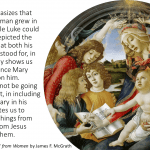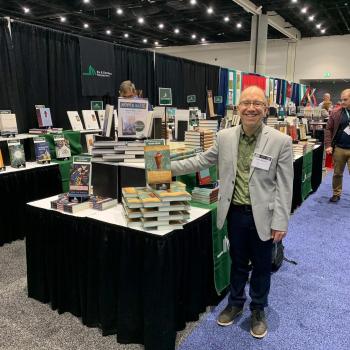I took notes in the Traditions of Eastern Late Antiquity session focused on the Silk Road. I apologize for not sharing them sooner, but once again hope they may come at a time when other academics are dismayed at so many conferences being cancelled or shifted to online, that you may take some small comfort from being afforded a glimpse of a session you perhaps missed in San Diego.
Before I move on to those papers let me draw attention to a Silk Road call for papers that may be of interest.
Now, on to the conference recap. The first paper I took notes about was by Richard A. Freund of Christopher Newport University: “The Caves of Letters: Jewish Texts and Communities from the Silk Road to the Via Maris.” This reflected a 2000-2002 excavation. The theme of the session was the Silk Road, but was open to contributions that relate to the pre-silk trade route. In China, things have been discovered from and about Jews along the Silk Road in the period from the 6th-9th centuries. Focusing in particular on texts hidden in caves in Magao on way to Kaifei and Bamyan in Afghanistan, starting in 2010-2011 people have started selling documents found in caves from these locations, presumably a genizah, i.e. a place where Jewish texts were buried. Only nature was allowed to destroy a text with the name of God in it, as was also applied to the human body. A number of receipts found in caves appear that the caves may have been used as toll booths, while in other cases it would seem that the original owner left documents with someone. Metal documents are rare, being difficult to create. One panel of a copper scroll took a student trying to replicate the process a semester to complete. Freund noted that mosques also bury Qur’ans. For those who may be more familiar with it, Dura Europos is situated along a branch of the Silk Road. The old incense road, the King’s Highway, also received a mention, as did the Kaifeng synagogue. Some would say the Jews were in China earlier, with the Tang Dynasty being most likely. Caves are due to tectonic plates (the Cave of the Warrior and Cave of the Treasure being famous examples), but the earthquake-prone areas that create caves sometimes also lead to destruction of cave contents.
We know more about Babatha than any one woman in antiquity thanks to items left behind in a cave. She apparently kept every single receipt in her pocketbook. They are in multiple languages: Nabataean, Hebrew, Aramaic, Greek. Some think that having them doesn’t prove ability to read them. There were 30 fragments of the Book of Psalms in those caves as well. The paper talked about the Abu Nasr acknowledgment deed (Persian in Hebrew characters), the Dunhaung/Magao caves, Marc Stein and the “Cave of a Thousand Buddhas,” and an 8th century Magao text in British Library. So much interesting material that lies well outside anything I normally work on.
Next Zsuzsanna Gulácsi of Northern Arizona University presented on “The Syro-Mesopotamian Ties of Uygur Manichaean Book Culture.” Her paper focused on sideways-oriented images as a shared phenomenon across traditions. She has published a lot in recent years, and there has been substantial work over the past 25 years or so on Manichaean manuscripts. Mani instituted the use of Syriac books in his community. Mani himself authored 8 texts and one book of pictures. Sealstones were used by Mani (these were, at the time of the conference, slated to be exhibited in the US for the first time). Turning now to Uyghur art from the 8th-11th centuries, fragments of the Book of Pictures have survived there. The Book of Pictures aimed to prepare disciples with knowledge of the divine beings they would encounter in the afterlife. Image and text are not always relevant context for one another in these works. Gulácsi now turned her attention to Armenian and Syriac manuscripts from the 10th-16th centuries. Prior to her research they received little to no attention. All but one of the manuscripts she discussed are Gospel books. One has images at its start, while another has illustration of story. 26 examples have art only in the prefatory matter. The independence of image and text is illustrated directly by the different orientation of each. She drew attention to the 4 or 12 magi attested in Syriac literature and also in Zoroastrian folklore. The annunciation to Mary at the well is the earliest sideways image in an Armenian manuscript. In at least one instance a folio was cropped and stitched into a later codex. For comparison Gulácsi made reference to Kufic Qur’ans, chain link frames, and format changes that are seen to have occurred in the Abbassid era. In some manuscripts there is bleeding through from the opposite side. One fragment has been carbon dated, and the same hand can then be traced in other manuscripts.
Giselle Bader (University of Sydney) presented on “Processes of Globalisation in Early Armenian Pilgrimage to the Holy Land,” a case study from her doctoral research. Her paper explored the ideological construction of Jerusalem as universal Christian homeland, themes of exile and imperial patronage. When we think of notions like homeland and celestial citizenship in the ancient world, we are liable to forget that earthly citizenship in those times was rare, not something that the majority of people had. 1 Peter was the first to use this language of sojourners, aliens and strangers with heavenly citizenship, although the author seems to be drawing on Psalm 39:12. When it comes to building in Palestine, Constantine’s motives are unclear. Eusebius views Constantine as the architect. 4 churches from that era stand out as most important: The Holy Sepulcher (two adjacent buildings), Nativity, and Ascension on the Mt. of Olives. He wanted the adornment to excel all others. Marble was taken from pagan temples there previously. We have a pilgrim’s description from 380 (Egeria). Bader talked about an existing tradition of space as a potential receptacle of holiness, martyrions, and pilgrimage as a globalizing process that contributed to the forging of a global Christian identity. We have 3 pilgrimage itineraria from the 4th century, including that associated with Eutactus (c. 361) from Armenia. Armenians were in the Holy Land at least from the 4th century. 6th-7th century mosaics and pilgrim graffiti provide important evidence for the movement of people and with them ideas. The Letters from Macarius, bishop in Jerusalem, to Thatanus bishop of Armenia are also an important source. See the Armenian Book of Letters, containing letters from the 4th-13th centuries. A 2008 study proves the Armenian version is a translation of a Greek original of Macarius’ letter. Did pilgrims carry these letters? Bader also mentioned Epiphanius and Gnostic heresies that were learned in Jerusalem and then carried to Armenia. The Greek and Armenian lectionaries are largely the same (attributed to James the brother of Jesus). Egeria was astonished by prayers appropriate not only to time but place. Scripture was brought to life by the landscape. A pilgrimage economy already existed by Jerome’s time, as locals took visitors and showed them places of purported significance. The permanent settlement of those who first went to a place as pilgrims also became a factor. Globalization and regional identity are dialectically related. Bits of the Holy Land including but not limited to relics moved to other places, including in imitations of architecture.













